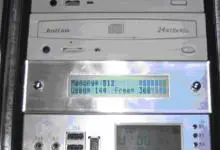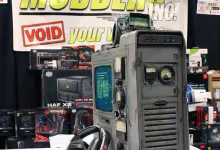Plexiglass Basics: What you need to know
Plexiglass comes in many different names, colors, and thicknesses. The types are very important as some are more flexible, scratch resistant or heat retardant. Most Plexi comes with a protective sheet covering both sides to protect it while working it.
Here are some types of plexiglass:
- Polycarbonate from hardware stores is fairly rigid, scratches and cracks easily. Has a pliability at 240F (115.5C), isn't as resistant compared to UV special types. It can be found in clear, tinted, frosted, colors and UV reactive.
- Lexan is a brand name and it is more flexible, UV resistant. It is not as prone to cracking, scratching, and pliability temperature of 280F (137.7C). Lexan can be found in clear, tinted, frosted, colors and UV reactive.
- Acrylic is another type of plexiglass with most of the same characteristics, except it's pliability temperature of 500F (260C) and doesn't come in UV reactive.
- Copolyester is very flexible, isn't UV resistant and has more impact strength than acrylic. It is pliable at about temperature of 250F (121C), and is only found in clear.
- Clear Polyvinyl Chloride (PVC) is very rigid, scratches and cracks resistant. Has a pliability at temperatures of 245 F (118C), is good High heat as well as self-extinguishing, is not UV stabilized and comes in colors as well as clear.
All the types listed above can be cut, drilled, engraved, bent and finished with great results. Thicknesses are 1/16"(1.5mm) and up. The thickness change in size in about 1/16" increments and usually comes with a removable protective film on both sides.
Most common modding thicknesses with Protective film
Depending on the place of purchase, most of these can be in sizes from 8" x 12" (203mm x 304mm) up to full sheets which are usually 4 x 8(1.22m x 2.44m). With all the different types of plexi listed make sure you make the right choices on glues, cleaners and usage.
Prep work for Plexi
Once an idea is in mind, an order of process is needed. I will show you two mods as examples of different processes in layout, cutting, drilling, engraving and finishing. A clean work area is a key to any good mod and it is very important when working with plastics. It can be easily be marred compared to other parts of the PC. Your work area should be a clean surface with a clean cloth to wipe off shavings from work being done. Besides safety glasses, gloves are needed as the plastic bits coming from power tools are hot and the edges can be as sharp as glass.
Layout
When working with plastics it is a good idea to have plastic or wooden rules and squares. They are less likely to scratch the plexi by accident. Marking requires a felt tip indelible marker on the plastic protective sheet or pencil on paper protective coverings.
Layout tools
Once all the tools and measurements are at hand transfer them to the plexi glass, giving a little extra for finishing. Mark the front and double-check the layout. Like the old saying goes "measure twice-cut once".
Layout marks for a window
Layout marks for a bracket
Another important part of layout work is the order of work. This order can help with success or break the sheet. In most cases the correct order is drilling, cutting, engraving, finishing if desired and finally mounting. The reason for drilling first, especially near an edge, is so that the more material you have the safer it is and less likely to crack. Cutting is the next step. That is so that we know the piece fits with good alignment before the last steps can be done.






